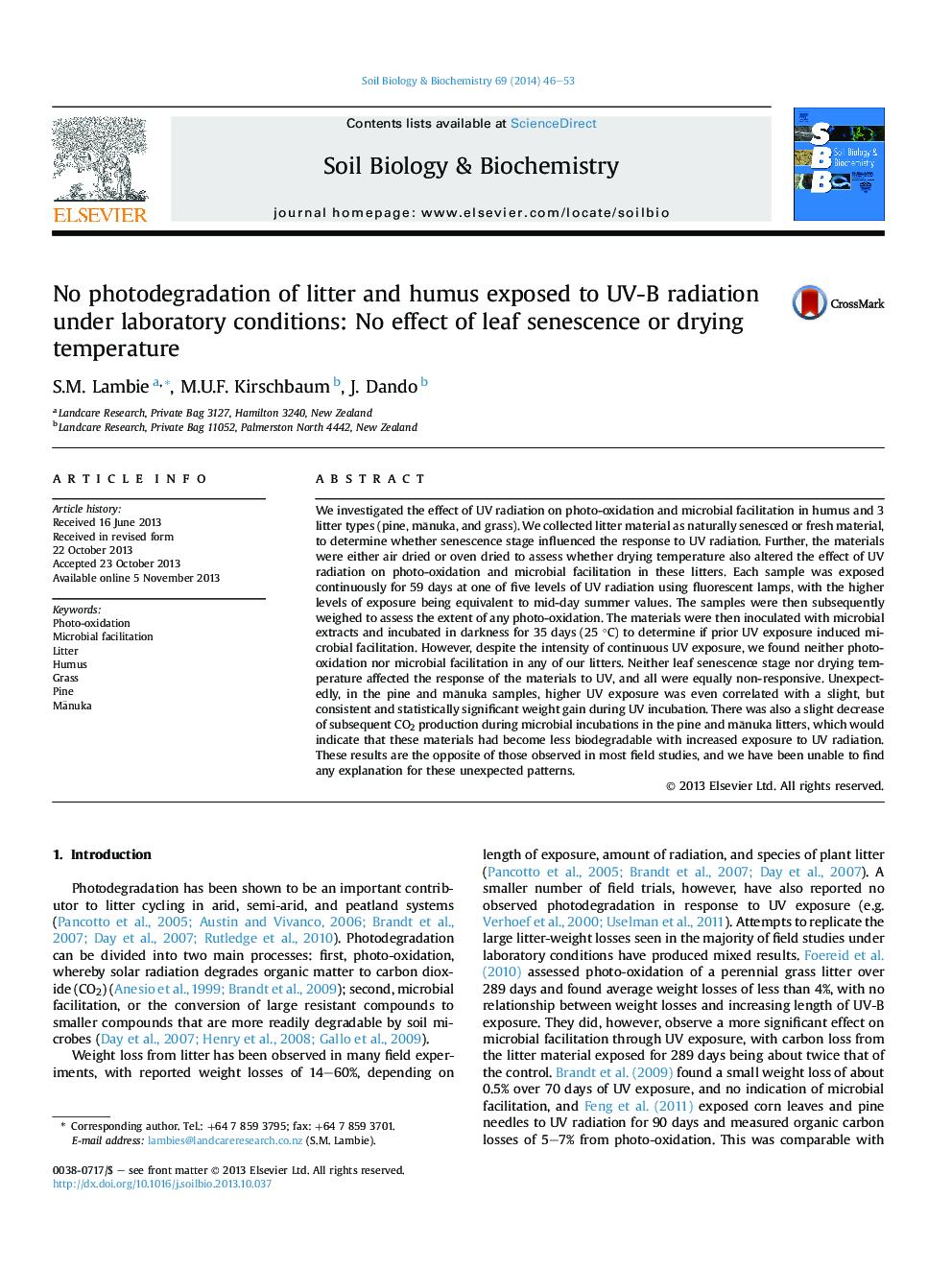| کد مقاله | کد نشریه | سال انتشار | مقاله انگلیسی | نسخه تمام متن |
|---|---|---|---|---|
| 2024712 | 1542615 | 2014 | 8 صفحه PDF | دانلود رایگان |
• There was no photo-oxidation in any of the four materials investigated.
• Nor was microbial facilitation found, although some indication of inhibition.
• No effect of drying temperature or senescent stage on UV response.
• Patterns opposite to most field studies, cause unknown.
We investigated the effect of UV radiation on photo-oxidation and microbial facilitation in humus and 3 litter types (pine, mānuka, and grass). We collected litter material as naturally senesced or fresh material, to determine whether senescence stage influenced the response to UV radiation. Further, the materials were either air dried or oven dried to assess whether drying temperature also altered the effect of UV radiation on photo-oxidation and microbial facilitation in these litters. Each sample was exposed continuously for 59 days at one of five levels of UV radiation using fluorescent lamps, with the higher levels of exposure being equivalent to mid-day summer values. The samples were then subsequently weighed to assess the extent of any photo-oxidation. The materials were then inoculated with microbial extracts and incubated in darkness for 35 days (25 °C) to determine if prior UV exposure induced microbial facilitation. However, despite the intensity of continuous UV exposure, we found neither photo-oxidation nor microbial facilitation in any of our litters. Neither leaf senescence stage nor drying temperature affected the response of the materials to UV, and all were equally non-responsive. Unexpectedly, in the pine and mānuka samples, higher UV exposure was even correlated with a slight, but consistent and statistically significant weight gain during UV incubation. There was also a slight decrease of subsequent CO2 production during microbial incubations in the pine and mānuka litters, which would indicate that these materials had become less biodegradable with increased exposure to UV radiation. These results are the opposite of those observed in most field studies, and we have been unable to find any explanation for these unexpected patterns.
Journal: Soil Biology and Biochemistry - Volume 69, February 2014, Pages 46–53
